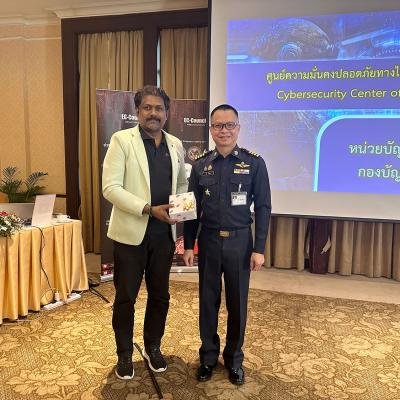Did you know that Iranian state-sponsored cyberattacks have surged by over 300% in the past two years?
With global tensions flaring and critical digital systems becoming high-value targets, cyber warfare is no longer confined to state secrets—it’s infiltrating our everyday business infrastructure. From healthcare systems and energy grids to enterprise SaaS platforms, no organization is immune.
At DigiAlert, we believe cybersecurity readiness starts with awareness. In this blog, we break down the latest findings, trends, and actionable insights every business needs to understand about the rising Iranian cyber threat landscape.
Understanding the Threat: Why Iran’s Cyber Capabilities Are Raising Alarms
Over the last decade, Iranian cyber operations have evolved from rudimentary defacement attacks to highly coordinated, stealthy intrusions. Backed by the state and often linked to the Islamic Revolutionary Guard Corps(IRGC), these Advanced Persistent Threat (APT) groups now operate with precision, speed, and chilling objectives: data exfiltration, critical infrastructure sabotage, and long-term espionage.
According to Microsoft’s 2024 Digital Defense Report, Iran-linked threat actors conducted more than 2,500 major cyber operations between 2023 and 2024—a 320% increase from previous years. Meanwhile, CISA, NSA, and FBI have issued multiple alerts since late 2023, urging businesses to implement stronger threat detection and mitigation protocols.
Key Insights You Can’t Ignore
1. Escalating Attack Volume
Iranian APT groups—such as APT33 (Elfin), APT34 (OilRig), and MuddyWater—have dramatically increased activity targeting both regional and global interests. The FBI noted a 120% year-over-year spike in detected intrusions by Iranian actors in 2023.
Most alarming is the rise in multi-pronged attack strategies:
- Ransomware attacks masquerading as criminal gangs
- Phishing campaigns targeting C-level executives
- Supply chain attacks exploiting third-party software
A notable 2024 case involved a phishing operation linked to MuddyWater targeting over 200 multinational companies via fake VPN software.
2. Critical Infrastructure Under Siege
Sectors such as energy, healthcare, transportation, and finance are facing direct cyber threats with potentially catastrophic consequences.
- A 2024 Mandiant threat report states that 40% of Iranian campaigns now target Operational Technology (OT) systems.
- DigiAlert’s telemetry shows a 46% increase in attempted network intrusions on energy grid providers across the Middle East and South Asia within just the last 6 months.
One such campaign involved manipulating ICS (Industrial Control Systems) in water treatment facilities—underscoring the attackers’ intent to cause real-world disruption, not just digital damage.
3. Exploiting Human Weakness: Social Engineering at Scale
Iranian groups have leaned heavily into social engineering and credential theft—low-cost, high-impact vectors.
According to the Verizon 2024 Data Breach Investigations Report (DBIR):
- 65% of breaches involving Iranian actors started with compromised credentials.
- Insider manipulation is increasingly being observed in campaigns against supply chain partners.
Case in point: A US defense contractor breach in early 2024 was traced back to a compromised SaaS vendor whose employee was socially engineered into granting backdoor access.
At DigiAlert, our Red Team simulations often reveal that even well-trained staff can fall prey to personalized spear-phishing tactics—emphasizing the need for frequent simulation and awareness campaigns.
Why This Matters: Beyond the Headlines
Many business leaders mistakenly assume that geopolitical cyber threats concern only governments or multinational conglomerates. In reality, small and medium businesses (SMBs) are often stepping stones for attackers, especially in supply chain-focused operations.
Here’s how it typically works:
- Primary Target (e.g., Defense Org)
- Pivot Point (SaaS Vendor or MSP)
- Weak Link (SMB with poor security hygiene)
By compromising smaller vendors or remote third parties, attackers can leapfrog into more fortified environments. This indirect attack strategy is a hallmark of Iranian cyber operations.
DigiAlert's Real-Time Threat Intelligence: What We’re Seeing
At DigiAlert, our threat intelligence and SOC teams have been tracking Iranian APTs closely over the last 12 months.
Here’s what we’ve observed:
- Rapid Deployment: Once initial access is gained, malware deployment occurs within 48 hours or less—leaving minimal room for response.
- Living Off the Land (LOTL) tactics: Iranian actors are leveraging built-in tools like PowerShell, WMI, and Windows Script Host to avoid detection.
- Customized Malware: Threat groups like APT39 are deploying custom RATs (Remote Access Trojans) designed to blend in with normal user behavior.
As our CTO puts it:
"Reactive security is no longer enough. Organizations must shift to predictive defense models—understanding adversary TTPs (Tactics, Techniques, and Procedures) is the new perimeter."
What Your Business Can Do Now
You don’t need a massive cybersecurity budget to start making a difference. Here are five practical steps any business can take:
1. Audit Your Supply Chain
Ensure vendors follow minimum security standards (e.g., MFA, endpoint monitoring).
2. Enhance Detection & Response
- Implement an MDR (Managed Detection and Response) solution.
- Utilize threat intelligence feeds focused on APT groups like those from Iran.
3. Improve Employee Awareness
- Run phishing simulations quarterly.
- Teach staff to recognize spear-phishing, QR code baiting, and fake SaaS login pages.
4. Zero Trust Architecture
- Adopt a Zero Trust model: Verify everything, assume breach, and enforce least privilege.
- Micro-segment your network—especially around critical data silos.
5. Patch & Harden Systems
- Iranian APTs exploit unpatched systems ruthlessly. Maintain a 24-72 hour patching window for critical vulnerabilities.
- Consider endpoint protection with behavioral analytics rather than just signature-based AV.
Why DigiAlert Is Your Trusted Ally
At DigiAlert, we specialize in:
- Threat Intelligence tuned to nation-state APTs
- Red Teaming & Adversary Emulation against Iranian tactics
- MDR & SIEM solutions tailored for real-time, predictive threat defense
- Incident Response playbooks and breach simulations aligned with global standards
Whether you're a SaaS startup, energy provider, or government-linked enterprise, DigiAlert provides custom defense strategies rooted in global cyber threat visibility.
Final Thoughts & Call to Action
Iranian cyber threats are growing in volume, sophistication, and audacity. They’re not waiting for you to be ready—and that’s exactly why you need to act now.
Here’s what you can do today:
- Assess Your Exposure: Are your remote workers, vendors, or cloud apps the weakest link?
- Share Your Insights: What defenses have you deployed against state-sponsored threats? Comment below—we’re building a knowledge-driven community.
Stay Updated:
Follow DigiAlert and VinodSenthil for real-time alerts, cybersecurity insights, and global threat briefings.







